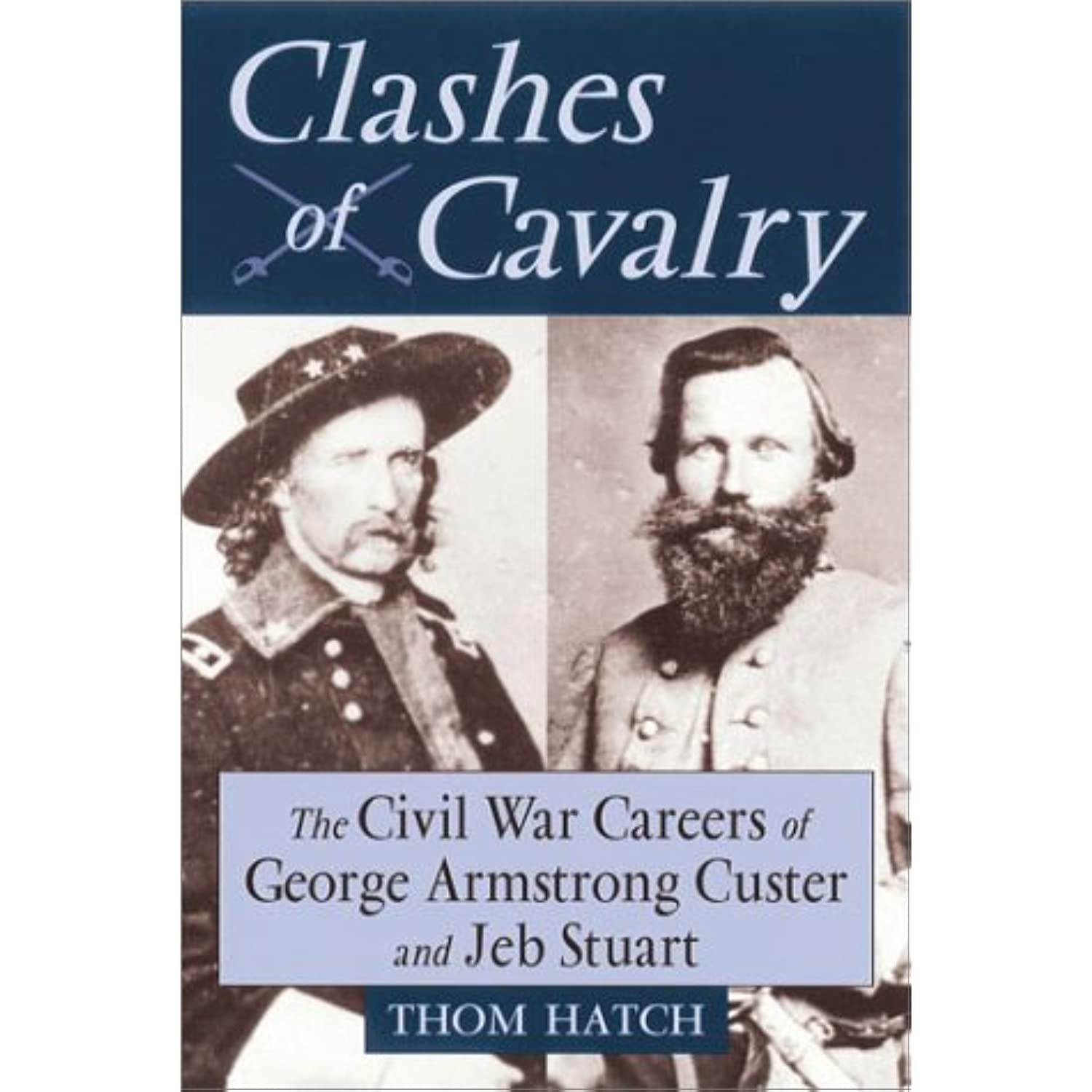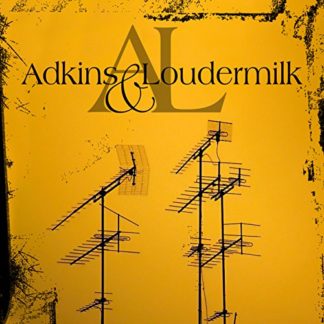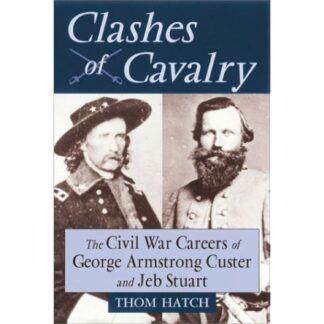Description
Product description
Clashes of Cavalry [Jul 01, 2001] Hatch, Thom … 0811703568
From Library Journal
Hatch (Custer and the Battle of the Little Bighorn, 1997) acquaints readers with the well-known lives and military accomplishments of his colorful protagonists: Custer, the fun-loving West Point cadet who graduated at the bottom of his class with 726 demerits; and Stuart, a fellow classmate and self-styled Virginia aristocrat who shunned the “hireling professions” of law and commerce for the battlefield. The author skillfully interweaves the extraordinary wartime exploits of both men from First Manassas until Stuart’s death at Yellow Tavern on May 11, 1864. He offers Stuart as a foppish master showman whose meteoric rise as the “Beau Sabreur” declines after Brandy Station and Gettysburg, largely owing to his willfulness and bad judgment. By comparison, the late-blooming Custer is seen to eclipse Stuart’s reputation through his daring generalship, ability to survive lackluster superiors, and substantial contribution to Lincoln’s 1864 reelection by driving Confederate troops from the Shenandoah Valley. Hatch’s concluding chapter summarizes the strengths and weaknesses of both cavalry commanders, and, surprisingly enough, he disappoints by declining to choose the better man, although his entire study argues for Custer. The scholarship is sound, and maps of the subjects’ raids and engagements are helpful. Recommended for Civil War collections at most libraries. John Carver Edwards, Univ. of Georgia Libs., Athens
Copyright 2001 Reed Business Information, Inc.
From Booklist
Despite falling short of General Lee’s expectations during the Gettysburg campaign, Stuart had a sterling reputation when he died in 1864. Perhaps warriors who die young have a better chance of departing with their glory intact. Of course, George Armstrong Custer was not so lucky. Had he avoided the unpleasantness on the Little Big Horn 11 years after the Civil War ended, he might have been hailed, based on his Civil War exploits, as a brave, gallant, wise hero. Hatch, a writer and historian, has traced the Civil War careers of these charismatic but flawed cavalry commanders, and he points out striking similarities. Both were personally courageous, flamboyant, and aggressive; unfortunately, both had a disturbing (and in Custer’s case, fatal) tendency to freelance in the pursuit of personal accolades. Hatch is clearly enamored with both of his subjects, and he occasionally ignores or glosses over some of their personal shortcomings and poor military decisions. Still, he has provided a well-written, engrossing, and generally accurate dual portrait of two of our more compelling Civil War icons.
Jay Freeman
Copyright © American Library Association. All rights reserved






Reviews
There are no reviews yet.